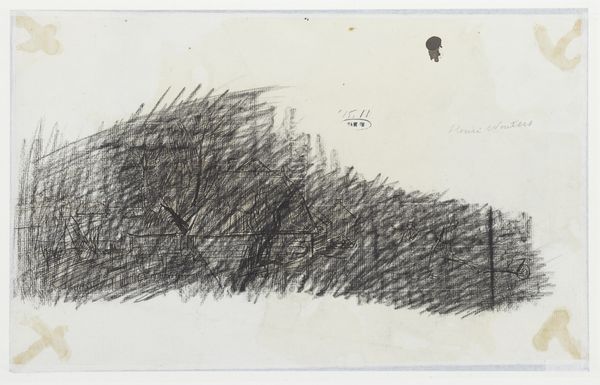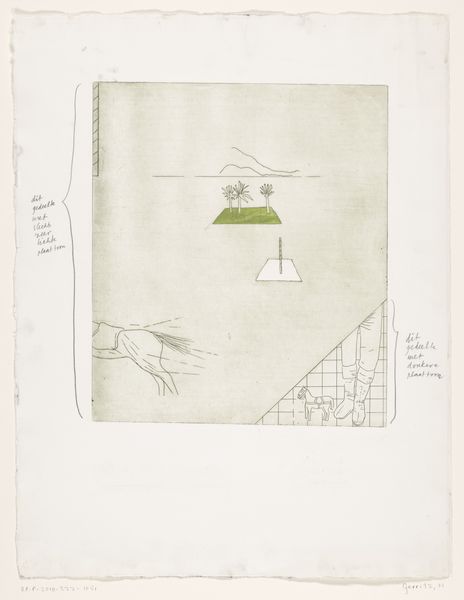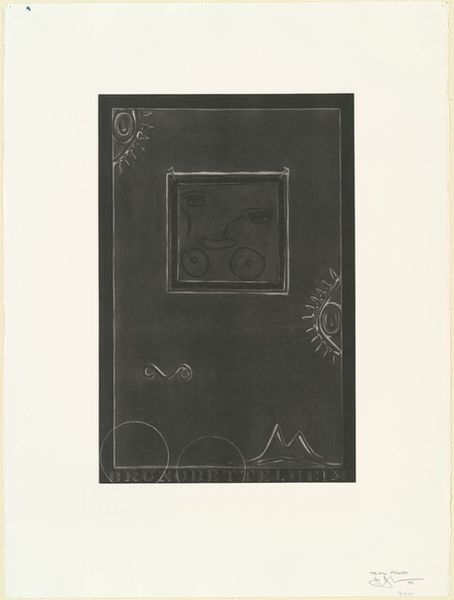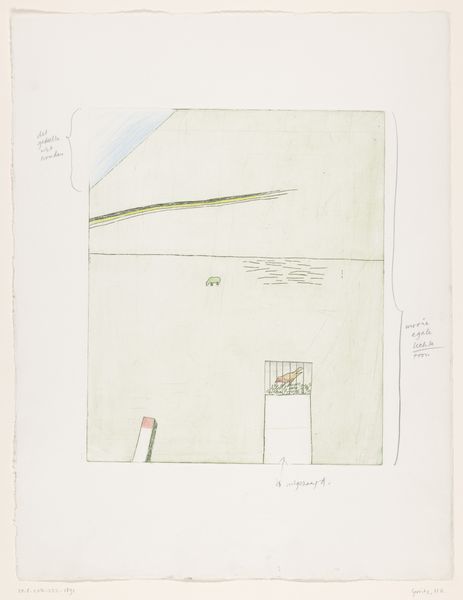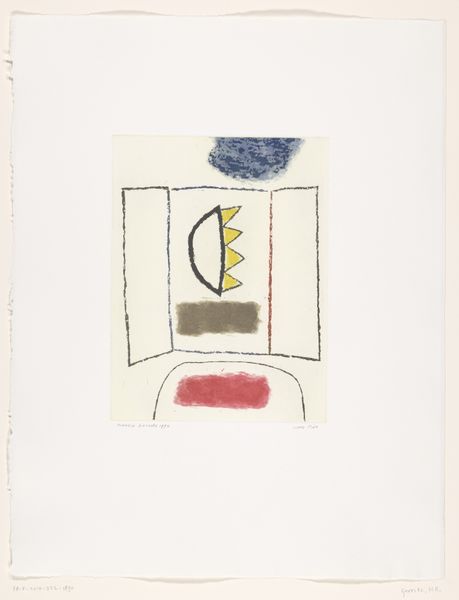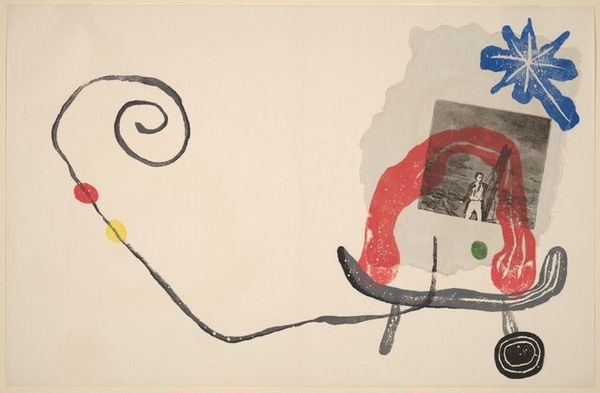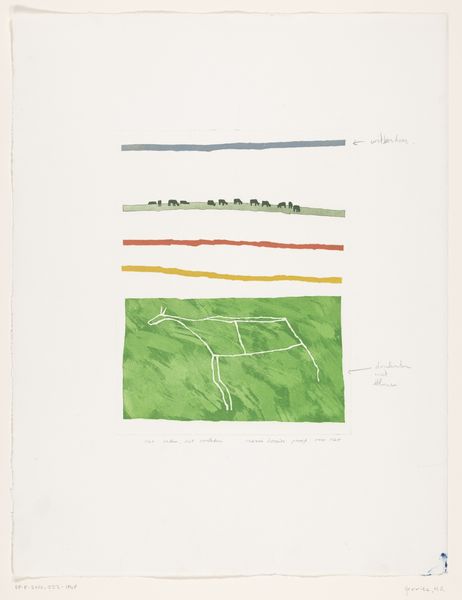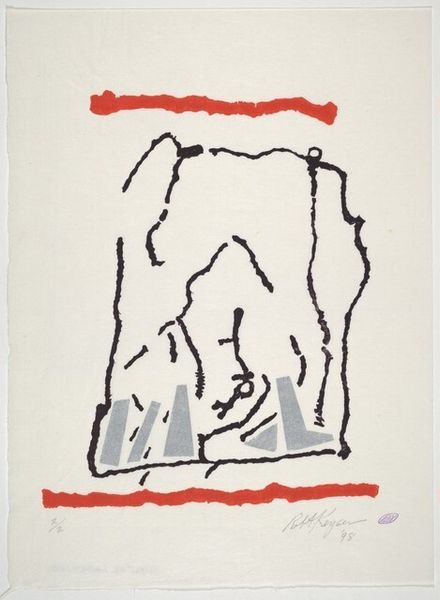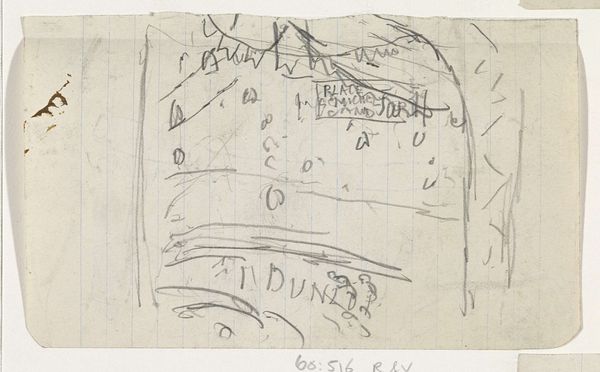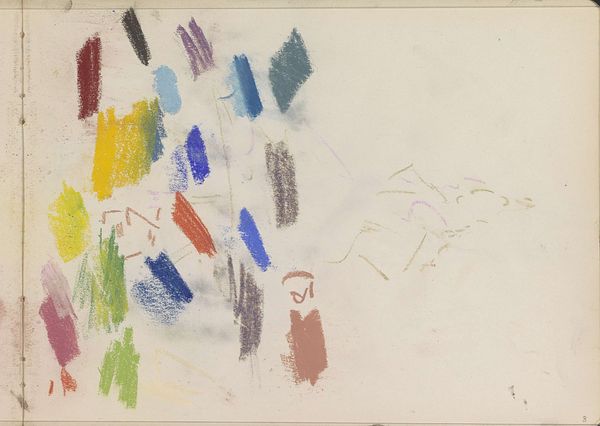
graphic-art, print, paper, ink
#
graphic-art
#
ink paper printed
# print
#
landscape
#
paper
#
ink
#
geometric
Dimensions: height 780 mm, width 558 mm, height 612 mm, width 375 mm
Copyright: Rijks Museum: Open Domain
Curator: Standing before us is Harrie A. Gerritz’s "Avondlicht" from 1984, a graphic print that marries ink and paper. Editor: My initial response is a kind of serene disconnect; the simple, geometric shapes against the blank canvas create an interesting composition, but it feels remote, emotionally muted. Curator: That's a fascinating reaction. The artist is presenting us with the four classical elements – water, air, earth, and fire. Placed next to symbolic representations, but what's particularly compelling to me is the sense of unease between the industrial and nature. See the sharp lines depicting ‘air’ next to the irregular ink of ‘water,’ this suggests disharmony and maybe even danger. Editor: Yes, I notice that as well. There is indeed something intriguing in the stark contrasts, and there is some degree of contrast as we can perceive them. But let's not discard composition. The juxtaposition of geometric forms attempts some form of harmony. Note the shades of the grey and how it plays in the foreground. In this piece, the shape are primary to interpreting it. Curator: I’m glad you brought up shape. The crude symbols, particularly the person-like form under “eau,” resonate with me. This isn’t just about aesthetics but a deeper probe into cultural and historical intersections. There is something prehistoric to these crude drawings, like we are entering into the collective conscious through a symbolic understanding. Editor: I understand that connection but I'm careful in how those references translate. What matters here, visually, is how these forms work against one another to build a unique abstract space. The artist clearly plays in geometric versus unrefined drawing to achieve such a vision, though its social commentary might seem unestablished. Curator: I disagree on unestablished commentary. If we look at it through a critical lens, "Avondlicht" emerges not as a mere aesthetic construct but as an existential proposition on identity, society, and their relation to our origins. Editor: A point well-articulated. Overall, what initially struck me as remote reveals, upon deeper examination, complexities in the relation and structure. Curator: Exactly. It's the tension between those opposing layers that ultimately make this print such a powerful exploration.
Comments
No comments
Be the first to comment and join the conversation on the ultimate creative platform.

